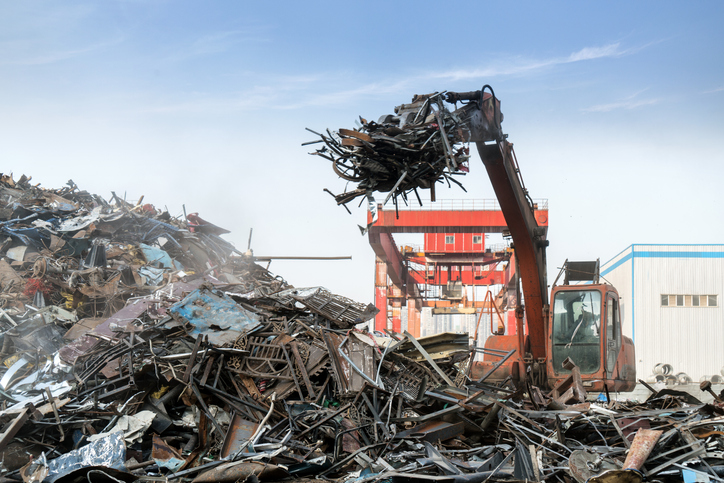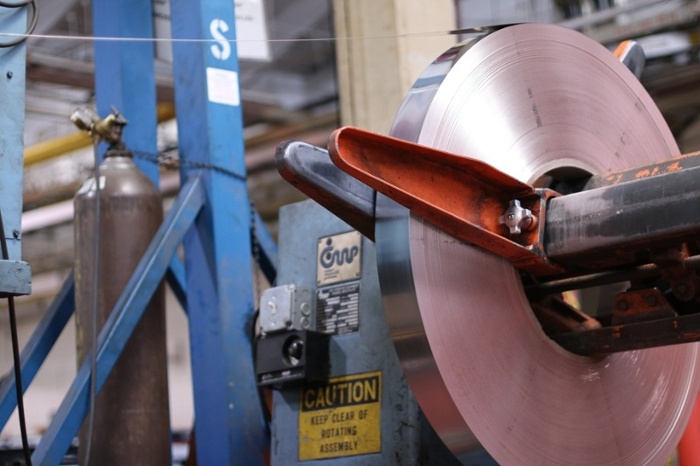VIDEO: The Shortcut to Better Structural Steel Mechanical Properties
The strength of steel and its alloys has come a long way.
The auto industry, for example, has been using higher-yield strength materials in chassis and other places for several years, allowing engineers to make thinner shapes with the same strength as thicker shapes made from weaker steel grades.
Yield strength measures the maximum stress a material can handle before it permanently deforms under a load. Among the mechanical properties of structural steels, yield strength is crucial. So why don’t several industries know how to increase yield strength with a simple trick?
The video above compares the bend resistance of two different types of steel. Below, we explain why, pound for pound, your project may not be as cost-effective as you think it is.
Related posts and videos:
- Wood Vs. Metal Mouldings Part 1: Impact Test
- Wood Vs. Metal Mouldings Part 2: Scrape Test
- Wood Vs. Metal Mouldings Part 3: Fire Test
Mechanical Properties Of Structural Steels: The Bend Test
Your part’s material and design should never get to the point where the shape deforms and never springs back. But for years, price kept OEMs from specifying a stronger material.
This test shows how much a piece of flat steel can endure – at a reasonable price. Both workpieces we tested are the same sizes of flat steel with the same thickness – 16 gauge.
Traditional Cold Rolled Steel – 1010 or 1020
This commercial-grade steel is readily available – most steel service centers have it on the shelf at a low cost. This steel has a yield strength of about 40,000 - 50,000 PSI (pounds per square inch) or 40-50 KSI (kilopounds per square inch). As you can see, commercial quality cold rolled steel offers some bend resistance – that’s why it's a favorite for roll formed shapes and fabricated assemblies. But don’t stop there – check test #2 out!
80 KSI Steel (Grade 80)
The price has come down on 80 KSI steel in recent years. Today it has a similar cost per pound as traditional commercial steel – the increase is negligible in return for the change in strength.
This type of steel is considered a high-strength, low-alloy steel (HSLA steel). These steels add significant strength while retaining formability.
You can see a noticeable difference in the effort it takes to bend this steel. It’s much tougher, which shows why HSLA steels are desirable for structural shapes.
Resource: Want to learn how to use steel to make a great roll formed part? Download our guide “How To Design a Great Part With Custom Roll Forming.”
Industries Behind the Curve
Increased material strength means you can make thinner components. HSLA steel cross-sections and structures are usually 20 to 30% lighter than a carbon steel with the same strength. Making parts thinner, of course, lowers the raw material cost. The raw material can be 50-70% of the selling price in the roll forming industry, which is significant when you’re paying by the pound.
The auto, rail, construction, and solar industries have been using higher KSI steels for years to capitalize on the reduction in weight while maintaining strength. We’ve yet to see many industries follow suit. The analysis for comparison of steel you are currently using vs. a stronger grade, and the resulting savings, is easy to do.
Beyond 40 and 80 KSI Steel
There are many grades of commercial-grade HSLA steels exceeding even 100 KSI. But for complex shapes that need an even higher strength-to-formability ratio, look to dual phase (DP) steels. Although DP steels may possess the properties for your part, they are a bit more expensive and less common in steel service center stocks.
While all of these recipes create a steel that can still be cold formed, specific tooling design considerations are essential. But, no need to hot roll it! The time is now to review your material specifications and develop your potential savings.
How Can You Exploit These Structural Steels?
After you know you have potential savings, there’s another bonus to your raw material change using custom roll forming: You might be able to add functional features to your component.
Say you have a standard heavy, structural C channel situated as a common structural element of your design. They’re easy – just buy 20 ft. random lengths from a supply center and cut them to size. You also need to drill holes to run wires and connect mating parts. Really, you would prefer a shape that is the same structurally, lighter but has a continuous pocket to be used as a wire raceway – but nobody has that!
However, your roll former can do all that in line, and you get the holes and added profile features for free! (OK, except for tooling.) For roll forming, holes, slots, and other features are effortless.
Maybe there’s another idea floating around in your brain. Be creative and take advantage of roll forming’s unique capabilities while saving raw material dollars.
Any industry where engineers say, “Well, we designed this part this way because we want the metal to be thick/strong,” may want to reconsider things. Is there something in your shape that’s never been optimal and can improve with more efficient manufacturing and materials?
Learn More About Structural Steels and Save
HSLA steel is a little more expensive but saves you money in the long run. Now it’s up to you to leverage that when designing roll formed products.
If you've been specifying the same way for 20 years, it might be worth re-examining your work. If you’d like to know more about the strength of structural steels and how it applies to your design, drop us a line.
Cut Your Roll Forming Costs
Your roll former should be able to help you find ways to cut your manufacturing costs while making high-quality parts. Download the guide below to learn more.
You May Also Like
These Related Stories

HSLA Steel Won't Break Your Back (Or Bank)

Eco-friendly Interior Design Materials: Is Steel Sustainable?





